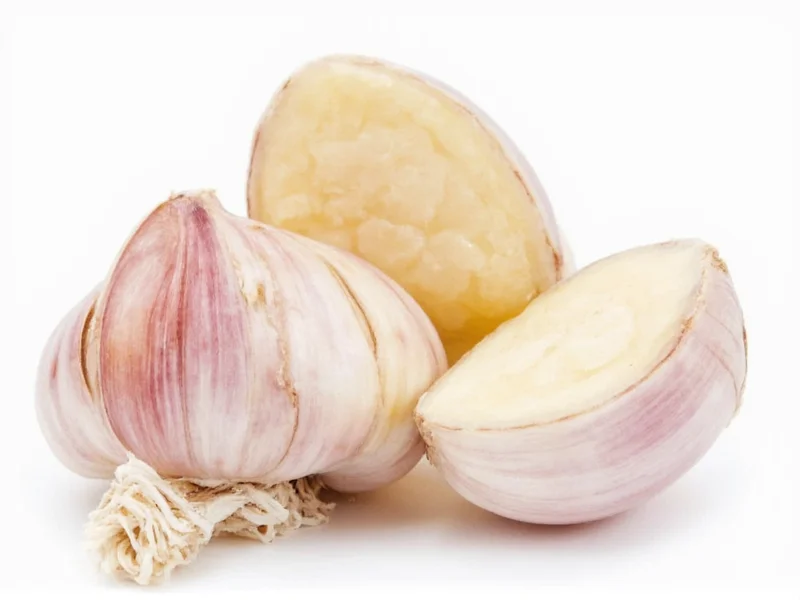Understanding what constitutes a garlic clove is essential for accurate cooking measurements and recipe execution. This fundamental kitchen knowledge helps home cooks and professional chefs alike achieve consistent flavor profiles in their dishes.
Physical Characteristics of a Garlic Clove
A garlic clove has several distinctive features that make it easily identifiable. The outer layer consists of a thin, translucent papery skin that ranges in color from white to purple depending on the garlic variety. Beneath this protective layer lies the fleshy interior, which is creamy white and firm to the touch when fresh.
The shape is typically asymmetrical with one tapered, pointed end and a flatter end where it was attached to the bulb's central stem. When separated from the bulb, each clove reveals a slightly concave side that faced inward toward the stem and a convex outer side.
Garlic Clove vs. Garlic Bulb: Understanding the Relationship
Many people confuse garlic cloves with the entire garlic bulb. To clarify:
| Term | Description | Typical Quantity |
|---|---|---|
| Garlic Clove | Individual segment of garlic | Single unit |
| Garlic Head/Bulb | Complete garlic unit with multiple cloves | 10-20 cloves |
| Garlic Spear | Individual sprout from a clove | 1 per clove (when sprouting) |
The bulb represents the complete garlic plant storage organ, while cloves are the individual reproductive units. When you purchase garlic at the store, you're typically buying whole bulbs that you then separate into individual cloves for cooking.
Size Variations Among Garlic Cloves
Not all garlic cloves are created equal. Size can vary significantly based on:
- Garlic variety - Softneck varieties typically have smaller, more numerous cloves (12-20 per bulb) while hardneck varieties have larger, fewer cloves (8-12 per bulb)
- Position in the bulb - Outer cloves are generally larger than inner cloves
- Growing conditions - Soil quality, climate, and cultivation practices affect final size
For precise cooking measurements, many recipes now specify weight rather than "clove" to account for these natural variations. One average-sized clove yields approximately 1-1.5 teaspoons of minced garlic.
Why Garlic Clove Identification Matters in Cooking
Accurately identifying and measuring garlic cloves directly impacts recipe outcomes. Understanding what is considered a single garlic clove helps prevent:
- Overpowering dishes with excessive garlic flavor
- Inconsistent results between cooking attempts
- Misinterpretation of recipe instructions
- Wasted ingredients from improper preparation
Chefs often remove the papery skin by placing the clove on a cutting board and gently pressing with the flat side of a knife, which loosens the skin for easy removal. This technique works because of the clove's distinctive shape and firm interior structure.
Common Misconceptions About Garlic Cloves
Several misunderstandings persist about garlic cloves:
- Myth: All cloves in a bulb are the same size
Fact: Outer cloves are consistently larger than inner cloves - Myth: Sprouted garlic cloves are unsafe to eat
Fact: Sprouted cloves are edible, though the green sprout may be bitter - Myth: Minced garlic from one clove always equals one teaspoon
Fact: Volume varies significantly based on clove size and mincing technique
Recognizing what is considered a proper garlic clove helps cooks navigate these common pitfalls and achieve more consistent culinary results.
Practical Applications for Home Cooks
When following recipes that specify "garlic cloves," consider these practical tips:
- Examine your garlic bulb to assess average clove size before preparation
- For precision cooking, weigh cloves (3-7g each) rather than counting
- Remember that smaller inner cloves may need less cooking time than larger outer cloves
- Store unused cloves in a cool, dry place away from direct sunlight
- When substituting jarred minced garlic, use 1/2 teaspoon per average fresh clove
Understanding the physical characteristics that define a single garlic clove transforms how you approach recipes calling for this essential ingredient. This knowledge bridges the gap between vague recipe instructions and precise culinary execution.











 浙公网安备
33010002000092号
浙公网安备
33010002000092号 浙B2-20120091-4
浙B2-20120091-4